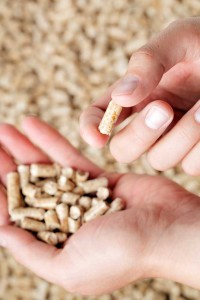A pellet stove is a residential heat source that burns biomass or wood pellets. The stove feeds this fuel from a hopper-style storage container into an area called the burn-pot, creating a constant flame that needs minimal adjustment. Users receive the benefit of a steadily burning heat source with a limited amount of effort.

What began as a simple design with a rather boxy appearance has become a decorative appliance used to heat the home. A pellet stove can be freestanding or inserted into a fireplace and vented in an existing chimney. Most of these stoves are made from large pieces of conductive cast-iron or steel, with stainless steel used to encase the exhaust and circuitry areas. Biomass stoves are efficient and make use of renewable resources, causing them to be environmentally-friendly.
Over the past decade, pellet stoves have become more popular options for home heating due to their smaller sizes and economical operation. Nearly 825,000 pellet stoves and fireplace inserts were manufactured in the U.S. between 1998 and 2010. A mixture of corn and wood or biomass pellets can be used in some stoves and others are UL listed for sunflower seeds, wheat, and even cherry pits.
The typical stove fueled by pellets is self-igniting and cycles off and on using a thermostat control. Some automatic ignition stoves feature remote controls and the most modern versions contain computer systems that run diagnostic tests and monitor safety conditions. These stoves are clean burning, creating only fly-ash during combustion.
When it is cleaned and maintained properly, this stove will not create creosote, which can cause a chimney fire. The pellet grade determines the ash output and performance of the fuel, with a premium grade pellet producing less than one percent ash. Using a lower grade pellet can affect the electronic machinery so owners should choose carefully.
